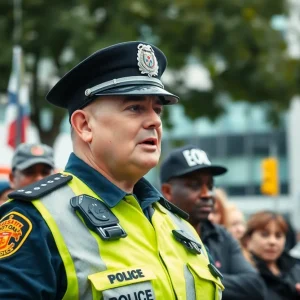‘It’s a Lack of Care:’ Asheville Resident Discusses Violence in Public Housing
ASHEVILLE, N.C. — Violence in public housing has become a growing concern in Asheville, North Carolina, as reflected in the experiences and observations of local resident, Nastassia Hearst Sr. As someone residing in public housing for the last eight years, Hearst shed light on the distressing uptrend in violent crime, particularly homicides, within her community.
Public Housing and Violent Crime: A Disturbing Nexus
In a recent conversation with Asheville Police Chief Mike Lamb, a disturbing connection between public housing and violent crime was discussed. Lamb admitted a discernable link, revealing that out of the seven homicides that have emerged this year, three has occurred within public housing complexes. So far, Hearst’s personal experiences corroborate with these official statements.
The Underlying Issues
Hearst expressed concerns about various factors contributing to this worrisome rise in criminal behavior. She highlighted that the accessibility of firearms among youth and a lack of education about gun violence are significant issues. “There needs to be a lot more education with gun violence, with guns period,” Hearst stressed, pointing to the indiscriminate danger guns pose — “bullets have no names.”
The Role of Community Engagement
Beyond individual issues, Hearst also emphasized the role of community attitudes and behavior. She indicates a visible lack of care among people for each other’s lives, which she believes paves the way for casual attitudes towards violence. “It’s a lack of care in the community and human lives,” she expressed.
Historical Neglect and Racial Inequality
Hearst also pointed to the historical neglect and racial inequality faced by black communities, saying that these elements may also contribute to the current rates of violence.
Seeking Solutions: A Greater Police Presence and Community Activities
While these problems might appear daunting, Hearst considers that some pragmatic steps could lead to improvements. A visible police presence within public housing complexes could serve as a significant deterrent, though Hearst acknowledges that this could also potentially spark conflicts.
Complementing policing, Hearst believes that a greater array of community activities could help keep young people engaged and distanced from the life of crime. “We could have a kids’ football team or a kickball team at the park – folks could come to the park, watch kids play kickball, nothing else,” Hearst suggested optimistically.
Need for Love and Respect
Hearst emphasized the importance of nurturing a sense of care, love, and respect within the community as an antidote to violence. Reflecting on the anxieties of her maternal instinct, she shared, “I don’t want to have to worry every time one of my sons goes out: Is he going to return?”
Looking Forward: Police Efforts and the Importance of Adequate Staffing
Over the years, police presence within public housing has seen its highs and lows, mostly as a result of funding. Police substations had been set up in the past, and citizen patrols and random patrols were also introduced. Despite the cycles of opening and closure of police substations, the goal remains to bring back a stable police presence within public housing, facilitated by adequate staffing.
Addressing the present violence that plagues Asheville’s public housing requires a multifaceted approach; one founded on fostering community care, increasing police presence, and ensuring a sustainable infrastructure to maintain safety measures. Only then can residents like Nastassia Hearst Sr. hope for a peaceful existence, without the constant shadow of violence looming over their homes.






